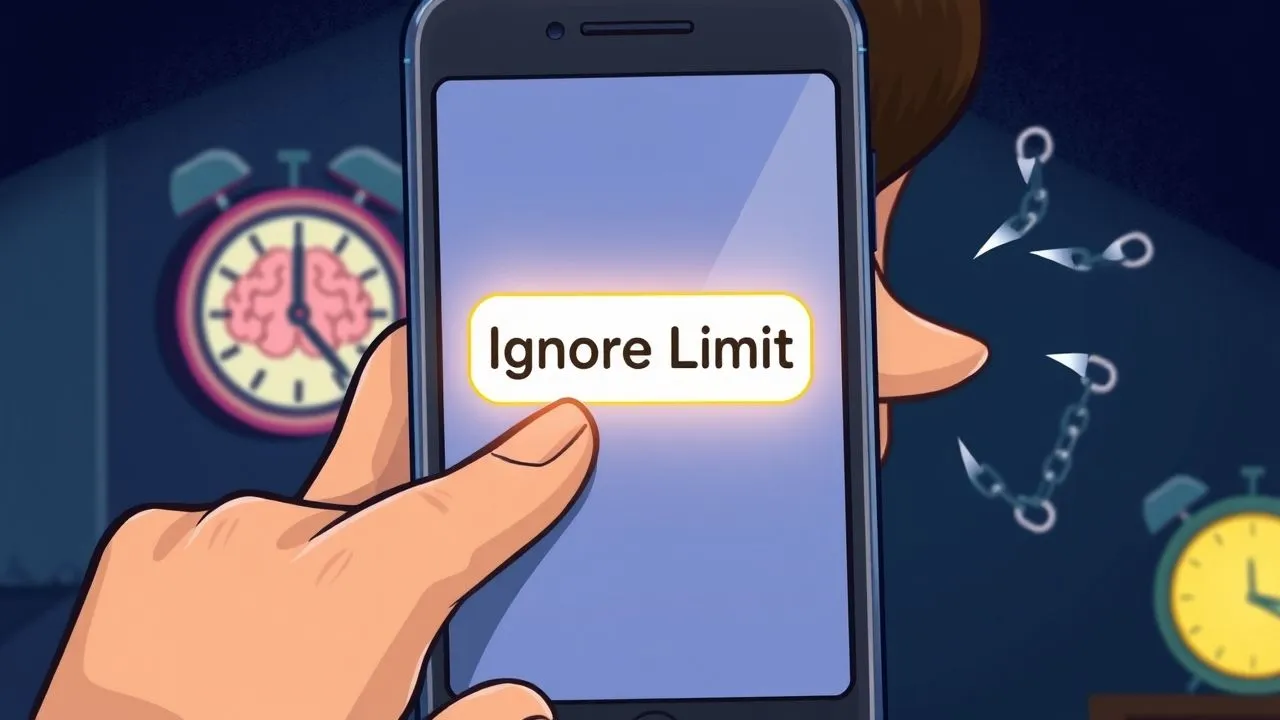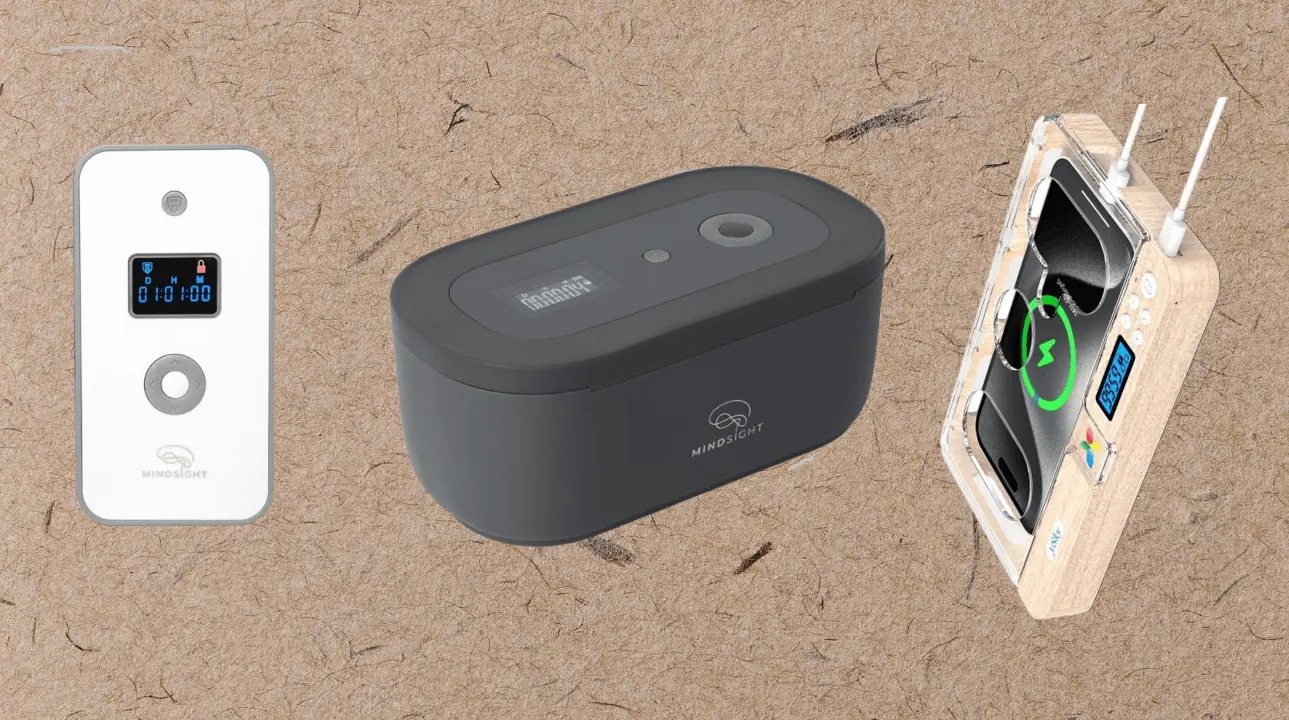
Let’s cut through the noise. You’ve probably tried screen time apps. Maybe you felt good for a few days, tracking your usage like some digital wellness warrior. But if you’re reading this, chances are you’re back to mindlessly scrolling through TikTok at 2 AM, wondering where your self-control went.
Here’s the brutal truth: while screen time tracking improves self-awareness, research shows it rarely leads to a significant reduction in mobile usage. Meanwhile, the average internet user spends 6 hours and 42 minutes online each day, according to DataReportal’s latest global report, and that number keeps climbing.
So what actually works? We’ve done the research, tested both approaches, and we’re here to give you the straight scoop. Spoiler alert: one of these tools is significantly more effective.
(Quick heads-up: This article may contain affiliate links. If you purchase through one of our links, we might earn a small commission at no extra cost to you. Our recommendations are based on genuine research and hands-on testing.)
The Screen Time App Promise (And Why It Usually Falls Short)
Screen time apps sound perfect on paper. Built-in solutions like iOS Screen Time and Android’s Digital Wellbeing promise to track your usage, set limits, and gently nudge you toward healthier habits. Third-party apps like Forest or Qustodio offer even more features.
What These Apps Do Well:
- Building Awareness: Nothing is quite as sobering as seeing you spent 8 hours on Instagram last week.
- Detailed Tracking: You’ll know exactly which apps are your biggest time-wasters.
- Parental Oversight: Parents can monitor and control their kids’ device usage remotely.
The Reality Check: A Battle of Wills You Often Lose Here’s where things get messy. These apps are incredibly easy to bypass.
Think about it. When you hit your daily limit on Instagram, what happens? A gentle notification pops up. You can:

- Tap “Ignore limit for today”
- Enter your password to override it
- Simply restart your phone
Your brain knows these workarounds exist. That knowledge alone makes the restriction feel optional, and when willpower is low, “optional” means “ignored.”
Enter the Phone Lock Box: When Commitment Gets Real
A phone lock box takes a completely different approach. Instead of relying on software you can outsmart, it creates a physical barrier between you and your device. You set a timer, place your phone inside, and the box locks itself until time’s up.

No overrides. No “just this once” buttons. No digital loopholes.
The Psychology Behind Physical Barriers There’s something powerful about removing temptation entirely. Studies that enforced a digital detox by placing devices in a locked cabinet showed significantly better results than software-based approaches.
This supports the ‘Brain Drain’ theory, where a landmark study from the University of Texas found that the mere presence of our phones reduces available cognitive capacity. When your phone is physically locked away, your brain can’t play that ‘maybe I’ll just check one thing’ game. You’re forced to sit with the discomfort, find other activities, and actually experience life without a constant digital companion. This kind of “cold turkey” approach leverages evidence-based behavioral principles proven to be effective for reducing problematic smartphone use.
Head-to-Head Comparison: Apps vs. Lock Boxes
Let’s break down how these two stack up across the factors that matter.
| Feature | Screen Time Apps | Phone Lock Boxes |
|---|---|---|
| Effectiveness | Low. Designed for awareness, not enforcement. | High. Creates a non-negotiable physical barrier. |
| Ease of Bypass | Extremely easy (passwords, restarts, deletion). | Nearly impossible without breaking the box. |
| Initial Cost | Free to ~$15/month. | $25 – $150 one-time purchase. |
| Primary Goal | Tracking and gentle reminders. | Forcing a complete break from your device. |
| Best For | Casual users building awareness; parental monitoring. | Breaking serious habits; creating focused time. |
When to Use a Screen Time App
Let’s be fair. Screen time apps do have their place. They work best for:
- Initial Awareness: If you genuinely don’t know where your time goes, these apps provide valuable insights.
- Workplace Monitoring: Limiting social media access during work hours.
- Parental Controls for Younger Kids: Children under 10 often lack the skills to bypass simple restrictions.
Notice the theme? These scenarios don’t require immense willpower or involve fighting a deeply ingrained habit.
When a Lock Box is the Clear Winner
Phone lock boxes dominate when you need real, lasting behavioral change. This is the right tool for:

- Breaking Severe Phone Addiction: If you spend hours daily on your device and can’t stop.
- Creating Phone-Free Family Time: Ensure dinner conversations happen without constant notifications.
- Deep Focus Work: For writers, students, and anyone needing uninterrupted concentration.
- Anyone Who Ignores App Limits: If you’ve found yourself bypassing app restrictions, you need a stronger solution. If you fall into this category, it’s time to explore a physical solution. We’ve tested and reviewed The 9 Best Phone Lock Box Timers to help you find the right one for your needs.
A 2022 Pew Research Center study revealed that while most teens feel happy and peaceful when they detach from their phones, 44% also feel anxious. A lock box forces you to push through that initial anxiety to reach the calm on the other side.
The Bottom Line: Match the Tool to Your Problem
Here’s our no-BS recommendation:
- If you just want to track usage and build awareness: Go with built-in screen time features. They’re free, and awareness is the first step.
- If you keep bypassing digital restrictions: You need a lock box. Your brain has learned that software limits aren’t real barriers.
- If you’re fighting a genuine phone addiction: Reducing screen time improves mental health, but only if you actually reduce it. A physical barrier is the most effective tool for this.
- For families with teens: Start with parental control apps, but be prepared to escalate to a family lock box if it turns into a constant battle of wills.
Screen time apps are for awareness; phone lock boxes are for action. For most people struggling with excessive phone use, the inconvenience of a lock box is precisely the point.

Don’t kid yourself about your willpower. Try this test: use your phone’s built-in screen time controls for two weeks. If you override your limits more than twice, it’s time to get serious with a physical lock box. The goal isn’t to punish yourself, it’s to create the space you need to remember what life feels like when you’re not tethered to a screen.

